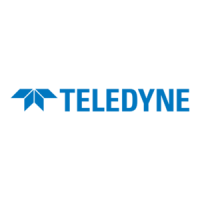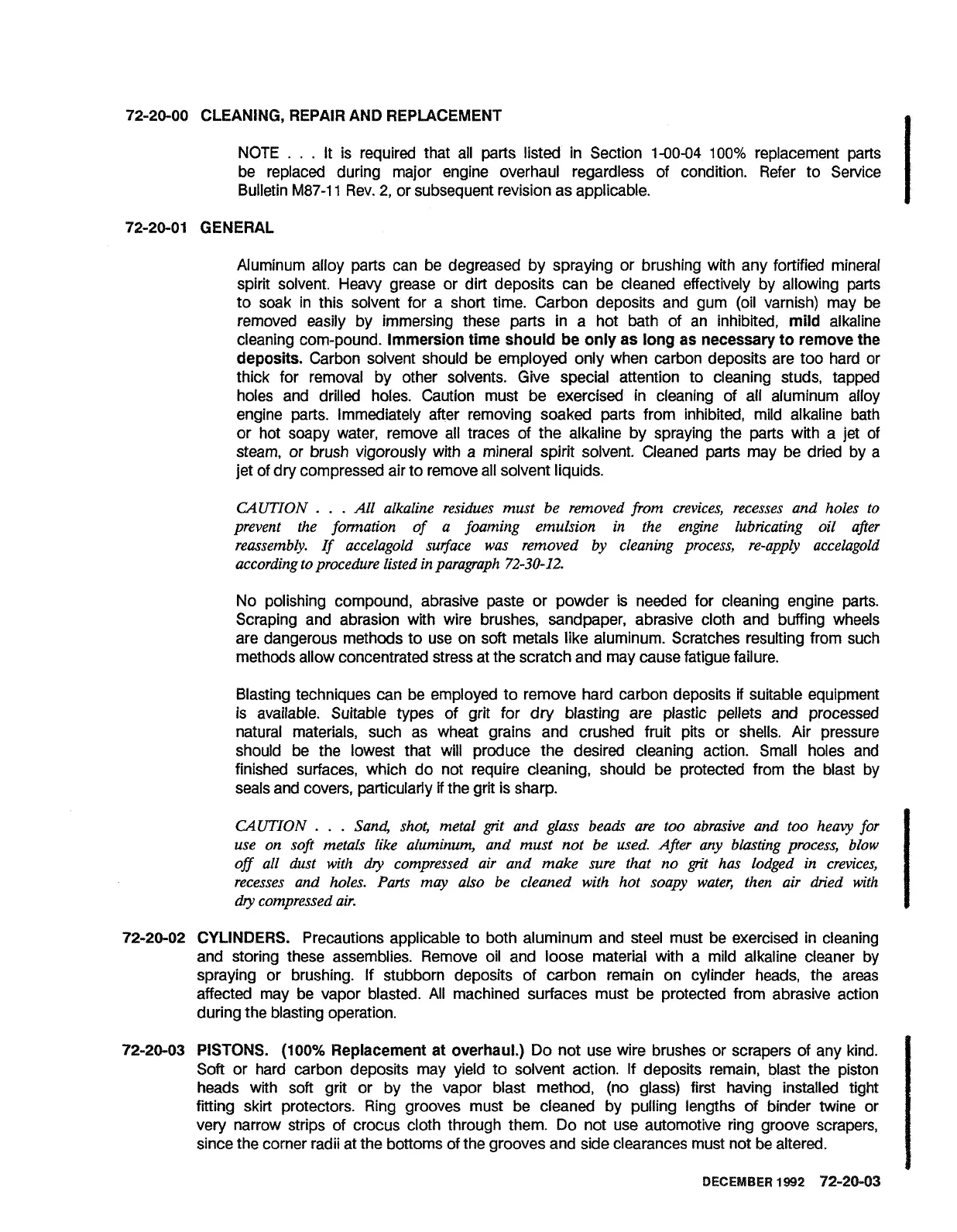72-20-00 CLEANING, REPAIR AND REPLACEMENT
NOTE
.
.
.
It is required that all parts listed in Section 1-00-04 100% replacement parts
be replaced during major engine overhaul regardless of condition. Refer to Service
Bulletin M87-11 Rev.
2,
or subsequent revision as applicable.
I
72-20-01 GENERAL
Aluminum alloy parts can be degreased by spraying or brushing with any fortified mineral
spirit solvent. Heavy grease or dirt deposits can be cleaned effectively by allowing parts
to soak in this solvent for a short time. Carbon deposits and gum (oil varnish) may be
removed easily by immersing these parts in a hot bath of an inhibited,
mild
alkaline
cleaning com-pound.
Immersion time should be only
as
long as necessary to remove the
deposits.
Carbon solvent should be employed only when carbon deposits are too hard or
thick for removal by other solvents. Give special attention to cleaning studs, tapped
holes and drilled holes. Caution must be exercised in cleaning of
all aluminum alloy
engine parts.
Immediately after removing soaked parts from inhibited, mild alkaline bath
or hot soapy water, remove all traces of the alkaline by spraying the parts with a jet of
steam, or brush vigorously with a mineral
spirit solvent. Cleaned parts may be dried by a
jet of dry compressed air to remove all solvent liquids.
GlUTION
.
. .
All alkaline residues must be removed from crevices, recesses and holes to
prevent the formation of a foaming emulsion in
the engine lubricating oil afer
reassembly.
If
accelagold su?$ace was removed by cleaning process, re-apply accelagold
according to procedure listed in paragraph
72-30-12.
No polishing compound, abrasive paste or powder is needed for cleaning engine parts.
Scraping and abrasion with wire brushes, sandpaper, abrasive cloth and buffing wheels
are dangerous methods to use on soft metals like aluminum. Scratches resulting from such
methods allow concentrated stress at the scratch and may cause fatigue failure.
Blasting techniques can be employed to remove hard carbon deposits if suitable equipment
is available. Suitable types of grit for
dry
blasting are plastic pellets and processed
natural materials, such as wheat grains and crushed fruit pits or shells. Air pressure
should be the lowest that will produce the desired cleaning action. Small holes and
finished surfaces, which do not require cleaning, should be protected from the blast by
seals and covers, particularly
if
the grit is sharp.
GlUTION
.
. .
Sand, shot, metal grit and glass beads are too abrasive and too heavy for
use on
sop metals like aluminum, and must not be used. Aper any blasting process, blow
off all dust with
dry
compressed air and make sure that no grit has lodged in crevices,
recesses and holes. Parts may also be cleaned with hot soapy water, then air dried with
dry compressed air.
72-20-02 CYLINDERS.
Precautions applicable to both aluminum and steel must be exercised in cleaning
and storing these assemblies. Remove oil and loose material with a mild alkaline cleaner by
spraying or brushing. If stubborn deposits of carbon
remain on cylinder heads, the areas
affected may be vapor blasted. All machined surfaces must be protected from abrasive action
during the blasting operation.
72-20-03 PISTONS. (100% Replacement
at
overhaul.)
Do not use wire brushes or scrapers of any kind.
Soft or hard carbon deposits may yield to solvent action. If deposits remain, blast the piston
heads with soft grit or by the vapor blast method, (no glass) first having installed tight
ftting skirt protectors. Ring grooves must be cleaned by pulling lengths
of
binder twine or
very narrow strips of crocus cloth through them. Do not use automotive ring groove scrapers,
since the corner radii at the bottoms of the grooves and side clearances must not be altered.
DECEMBER
1992
72-20-03

